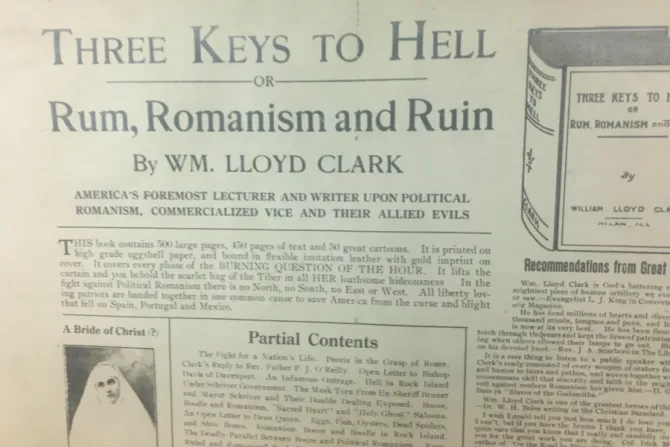Washington D.C., Oct 28, 2020 / 09:00 am
If you've ever seen an old cartoon of the pope taking over the White House but wanted to hold the original piece of paper, you're in luck.
At the Catholic University of America in Washington, D.C., the special collections department has a trove of historical material, spanning centuries. From political smears of 1928 Al Smith, the first Catholic to be nominated by one of the parties to run for president, to the papers of a Massachusetts convent torched by mobs in 1834, U.S. Catholic history is a long and difficult story worth preserving and understanding.
The collection is "trying to tell the story of American Catholics writ large," university archivist William Shepherd told CNA in an interview last week.
The Catholic University of America holds a particular place in U.S. Catholic history, founded by the country's bishops under an 1887 papal charter of Pope Leo XIII.




